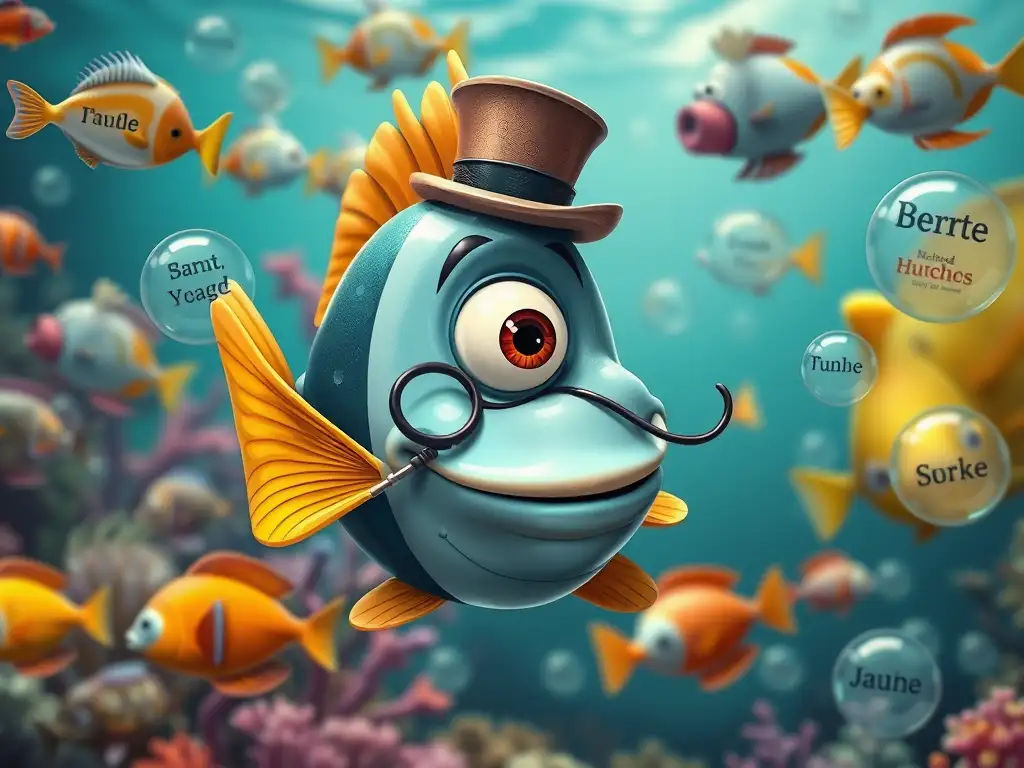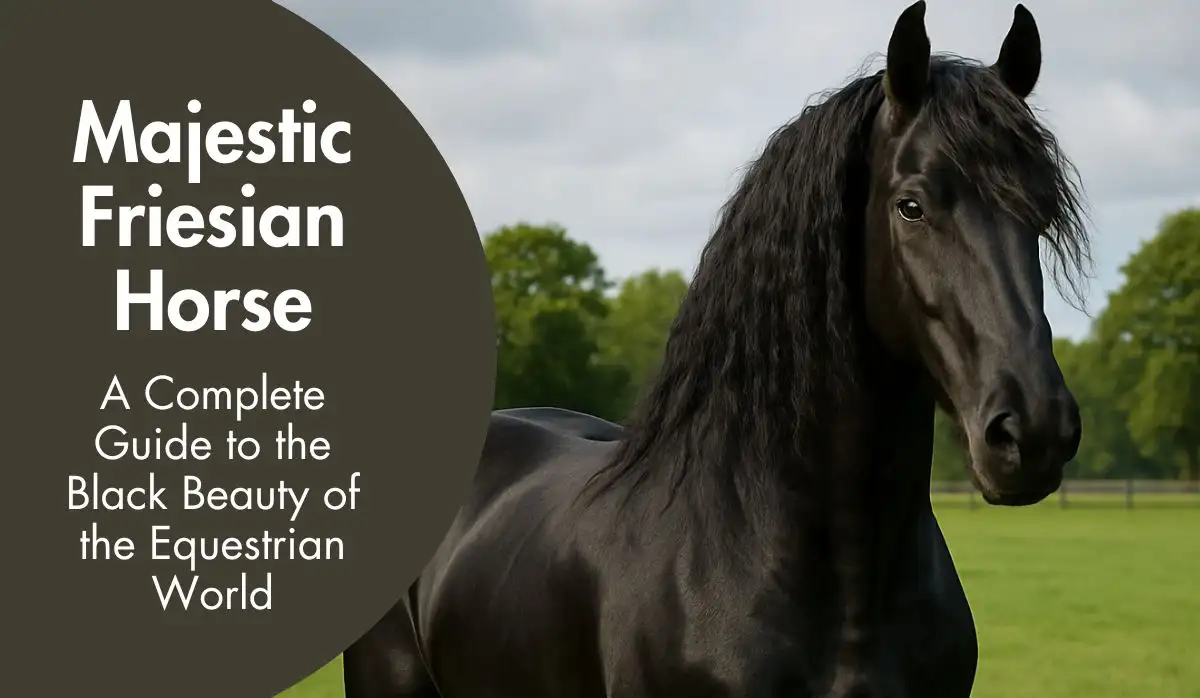
Ever imagine that your aquarium is a comedy club? 🐠😂 Get ready to plunge into the ridiculous world of funny fish names. From tongue twisters to feisty fish swimmers, the aquatic monikers are in a league of their own.
It’s time to meet some finny friends, whose names are so outrageous, that you’ll think stand-up comedians baptized them. We’re getting ready to dig into five fish names that guarantee to make you laugh out loud. Whether an aquarist or just a person who likes a good joke, this list will reel you in with great wordplay and sheer silliness.
So, there’s no ado about it- let’s take a deep breath and dive down into the fathoms of comedy to unravel why these five fish names create ripples worldwide in the realm of oceanic comedy. From the tragicomically pathetic-looking Blobfish to the carpet-living Tasseled Wobbegong, we’re diving into an underwater adventure that has shown sometimes laughter best comes when you least expect it, such as from the depth of the sea! 🌊🤣
The Slippery World of Funny Fish Names

Why fish names can be hilarious
Names of fish evoke a smile on our faces since they invariably seem quirky and weird. Consider, then, the Sarcastic Fringehead, a small fish with aggressive and territorial behavior, despite its almost comical name. Or take the Humuhumunukunukuapua’a, Hawaii’s state fish whose name is almost a tongue twister as much as it means “triggerfish with a snout like a pig.” Such names are indicative of the amusement presented by marine biology, wherein scientific classification meets creativity in human names.
The art of naming fish species
Naming fish species requires a balance of scientific accuracy with a flair for description. Many names describe how the fish look, such as the Tasselled Wobbegong-a carpet shark, whose fringe features help it hide. Others describe behavior, as in the case of the Slippery Dick wrasse, an evasive little fellow that does its best to avoid capture by slithering through the reef. The Lumpsucker fish gets its name because of its body, an oval lumpy one, and because of its mode of attachment to surfaces using thin, adhesive discs. Both names are identifiers as well as expressions of some characteristics of the fish.
Impact of funny names on marine biology interest
Humorous fish names can arouse curiosity and thus increase public interest in marine biology. For instance, the Monkeyface Prickleback might fascinate people due to its strange name, thus getting them interested in learning about the interesting ability to change sex. The Red-Lipped Batfish, whose bright lips and locomotion have no parallel, has already drawn people’s attention by its name alone. These entertaining names can also be used as a gateway to the world for people to enter into marine conservation and learn about the diverse underwater world.
Now that we’ve covered the slimy world of amusing fish names, let’s plunge deeper into perhaps one of the most famously droll-looking sea creatures. Now, we come to “The Blobfish: Not Just a Sad Face,” which explains why the strange fish became so popular for so many.
The Blobfish: Not Just a Sad Face

Now that we’ve dived into the slippery world of funny fish names, let’s take a look at one of the most infamous underwater celebrities: the blobfish.
Origins of the blobfish name
Scientifically known as Psychrolutes Marcus, the blobfish got its funny name from how it looked once brought up from the bottom of the sea. In reality, the blobfish is pretty normal in the natural deep-sea environment between 2,000 to 3,900 feet below the surface of the ocean. The distortion of the gelatinous body due to the extreme change in pressure causes it to have that blob-like shape that the blobfish’s funny name originated from.
Internet meme phenomenon
The blobfish became the internet sensation of 2013 when it was declared the “world’s ugliest animal.” This title then created a sort of cultural phenomenon, with thousands of memes and merchandise featuring its sad-faced, gelatinous appearance. Still, this is somewhat misleading since the blobfish only assumes this grotesque appearance when removed from its high-pressure environment.
Conservation efforts for the “world’s ugliest fish”
Though its rather unattractive reputation did it no favors, the blobfish has risen to represent such conservation causes among less conventionally attractive species, and organizations such as the Ugly Animal Preservation Society have initiated projects to spread public awareness on preserving these frequently ignored beings. The blobfish is threatened by deep-sea fishing and global warming, which cause environmental change. Conservation efforts attempt to conserve the blobfish’s habitat through marine protected areas as well as setting fishing regulations to guarantee its survival in the face of threats arising from human activities.
As we say goodbye to the blobfish, the next unusual-ly named sea creature will await us. And so, the Tasseled Wobbegong carpet shark is next to make you go double-take.
Tasseled Wobbegong: The Carpet Shark

Now that we have discussed the blobfish’s strange looks, let’s take a deep dive into another marine creature with just as funny of a name: the tasseled wobbegong.
A. Explanation of its unusual name
The tasseled wobbegong (Eucrossorhinus dasypogon) is taken after its peculiar appearance. “Wobbegong” is a word from the Australian Aboriginal language, meaning “shaggy beard,” which accurately describes the fringe of dermal flaps around its head. These look like a carpet’s tassels; hence, the part of its fish names with “tasseled”.
B. Unique physical characteristics
This carpet shark has some very remarkable features:
- A flat and wide body that can reach up to 1.8 meters (5.9 feet) in length
- A fringe of the dermal flaps surrounding its head, designed to aid in camouflage.
- Mosaic-like dorsal coloration featuring gray or brown skin with tan and dark brown lines
- Sensory whisker lobes around its jaws
All these characteristics combine to make the tasseled wobbegong have an uncanny resemblance to a living, breathing carpet on the ocean floor.
C. Habitat and behavior
The tasseled wobbegong ranges “fish names” from shallow coral reefs to the northern coast of Australia, New Guinea, and surrounding islands. Its range extends from the intertidal zone down to about 50 meters (160 feet).
This behavioral interesting shark:
- Generally found alone and nocturnal
- During the day, rests motionless in caves or under ledges
- It is an ambush predator, relying on its color pattern, making it inseparable from the sand or the surrounding bottom
- The shark uses a tail-waving method to attract prey closer
- It eats fish and invertebrates, at times consuming its prey whole
It’s a docile creature toward humans, but “fish names” do be cautious if you find yourself face-to-face with it in the wild.
And as we leave behind the carpet-like tasseled wobbegong, we now have to wriggle our tongues around this funny fish names: the Humuhumunukunukuapua’a. This is the Hawaiian tongue-twister sure to make you laugh and possibly tie your tongue!
Humuhumunukunukuapua’a: The Tongue Twister

Now that we have covered the weird carpet-like appearance of the Tasseled Wobbegong, let’s move on to a fish names with an equally interesting name but for very different reasons.
A. Pronouncing the Hawaiian state fish
The humuhumunukunukuapua’a, Hawaii’s state fish, is a tongue-twister that often bewilders visitors. For pronunciation purposes, try to break it down phonetically: “who-moo-who-moo-noo-koo-noo-koo-ah-pooah-ah.” If you want a more entertaining way of mastering the name, listen to Don Ho’s version of “My Little Grass Shack,” in which the name of the fish is repeated several times.
B. Cultural significance in Hawaii
The humuhumunukunukuapua’a is a very special fish in Hawaiian culture. As the state fish, it symbolizes a very important part of Hawaii’s natural heritage. The significance of this fish extends beyond its unique fish names, as it reflects the greater importance of the Hawaiian language and cultural education. For many locals, the name is easier to pronounce because they were immersed in Hawaiian culture and language from a young age.
C. Interesting facts about this triggerfish
This tropical reef triggerfish is aggressive and territorial; snorkelers should be considered in the animal’s personal space, as they can become fiercely defensive of their habitat. In the triggerfish family, the species is characterized by a unique appearance and bright colors.
When people visit Hawaii and go snorkeling or diving to explore the wide variety of marine life, this fish is common to see. Tour operators, such as Sea Paradise, known for their good staff and the tour on manta rays, would give a view of the humuhumunukunukuapua’a in its habitat.
From here, we go from the mouth-twisting state fish of Hawaii to a name that seems more or less emblematic of what this fish looks like: Sarcastic Fringehead. And, true to form, this grouchy swimmer should prove to be every bit as interesting as our Hawaiian friend but with a wholly different personality.
Sarcastic Fringehead: The Grumpy Swimmer

Now that we’ve discovered the tongue-twister of a name of the Humuhumunukunukuapua’a, it’s time to discover the world of another fish that boasts an equally intriguing name Sarcastic Fringehead.
Reason behind its snarky name
The Sarcastic Fringehead, Neoclinus Blanchard, is known by such an odd name for its fighting habits and striking physical features. “Fringehead” comes from the fine tissue over the top of the fish’s eyes; “sarcastic” likely is a mistranslation from the Greek “sarkazein,” meaning “to rend flesh.” It describes to perfection how the fish defends itself.
Aggressive behavior and territorial nature
The Sarcastic Fringehead is a highly territorial and aggressive fish names. Small in size, these fish are 3 to 8 inches in length and are known to defend their selected living spaces aggressively. These spaces may include empty shells, burrows, crevices, or even debris discarded in polluted waters. Territorial battles involve dramatic displays of aggression where the fish engage in “kissing” contests, where they press their mouths together to assert dominance.
Male Sarcastic Fringeheads are very territorial. They will fight hard to have burrows. Once a female lays eggs in a male’s territory, he will become the protector, and they will look after the eggs till they hatch. This behavior truly depicts how complex life can be.
Unique mouth structure and display
Perhaps the most distinctive feature of the Sarcastic Fringehead is the impressive mouth structure. These fish have a huge mouth that opens four times in size compared to when it’s closed. The males show the brightly colored inside of their mouths in a rather peculiar behavior referred to as “yawning” at each other during confrontations with rivals. This exaggerated jaw morphology is more of an intimidation factor, in which the fish can assess their potential opponents and avoid unnecessary physical conflicts.
If the first display is not enough to deter intruders, Sarcastic Fringe heads will even resort to mouth-to-mouth combat, revealing their sharp, needle-like teeth. The peculiar fighting style combined with their vibrant mouth colors makes for a spectacular sight in the underwater world.
As we move on from the cranky Sarcastic Fringehead, we will proceed to learn about another somewhat funny fish name: the Spotfin Hatchetfish. While the Sarcastic Fringehead is famous for its displays of aggression, the Spotfin Hatchetfish has a unique claim to fame of its own, which we will find out in our next section as we learn about this flying fish look-alike.
Spotfin Hatchetfish: The Flying Fish Impersonator

Now that we have basked in the pettish attitude of the Sarcastic Fringehead, let’s dive into the realm of more interestingly named fish-that is, the Spotfin Hatchetfish, nature’s flying fish impersonator.
Origin of its axe-inspired name
The scientific nomenclature for the Spotfin Hatchetfish is Thoracocharax stellatus. Its body shape makes it highly unique, which has led to its interesting nomenclature. “Thoracocharax” comes from Greek words that mean “breastplate” and “a palisade of pointed sticks,” because of the fish’s pointed teeth and distinctive pectoral structure. This gives it a hatchet-like appearance, which explains the common name.
Peculiar body shape and adaptations
T. stellatus has an extraordinary body form that makes it stand out among other fish names. Its flattened body, small upward-facing mouth, and long fins give it a silhouette of an axe. Such a shape is not only an ornament but rather an adaptation for better jumping capabilities. Although T. stellatus cannot fly, the Spotfin Hatchetfish can leap out of the water with impressive strength, mainly to avoid predators.
Female Spotfin Hatchetfish can be identified by their more rounded abdomens, particularly when they are egg-bearing. Sexing the fish, however, is rather tricky, and this way, it is usually better to compare groups rather than specific members of one group for accurate identification.
Bioluminescent properties and deep-sea living
Although the Spotfin Hatchetfish is not a deep-sea fish names, it has certain interesting features that make it unique in its freshwater habitat. Its body is covered by a shining silvery coat that catches light, for which it received the species name “stellatus,” meaning “starry” in Latin.
This fish lives in many river systems of South America, ranging from the Amazon, and Orinoco, to the Paraguay basins. It prefers rich surface vegetation zones in both black and clear water streams. In the wild, T. stellatus maintains ecological balance by feeding on terrestrial insects that it captures by jumping out of the water.
In aquarium conditions, the Spotfin Hatchetfish needs special conditions to reproduce in its natural environment. The minimum size of the tank is 120 x 45 cm, with a temperature range of 20-28°C and a pH of 5.0-7.5. Floating plants are necessary to minimize the skittish nature of the fish and to create a suitable environment for potential breeding, though successful breeding in captivity is very difficult.
Conclusion

The world of fish names can only be classified as a treasure of humor and creativeness. Such examples include Blobfish, sadly humorous, and then the tongue-ticklingly Humuhumunukunukuapua’a, while the Tasseled Wobbegong and Sarcastic Fringehead, and now Spotfin Hatchetfish proves that sometimes life is funnier than fiction.
Remember the next time you want to put some personality in your aquarium, or just share fishy knowledge to impress your buddies, these ridiculous names. Chances are if you like a good pun or pop culture references, or perhaps just plain absurd names, then there is an amusing fish name for you, too. Now, dive right in, crack a smile, and enjoy that lighter side of marine biology while remembering that after all, it’s too darn short to worry about taking these fish names all that seriously.








 Facebook
Facebook instagram
instagram youtube
youtube




